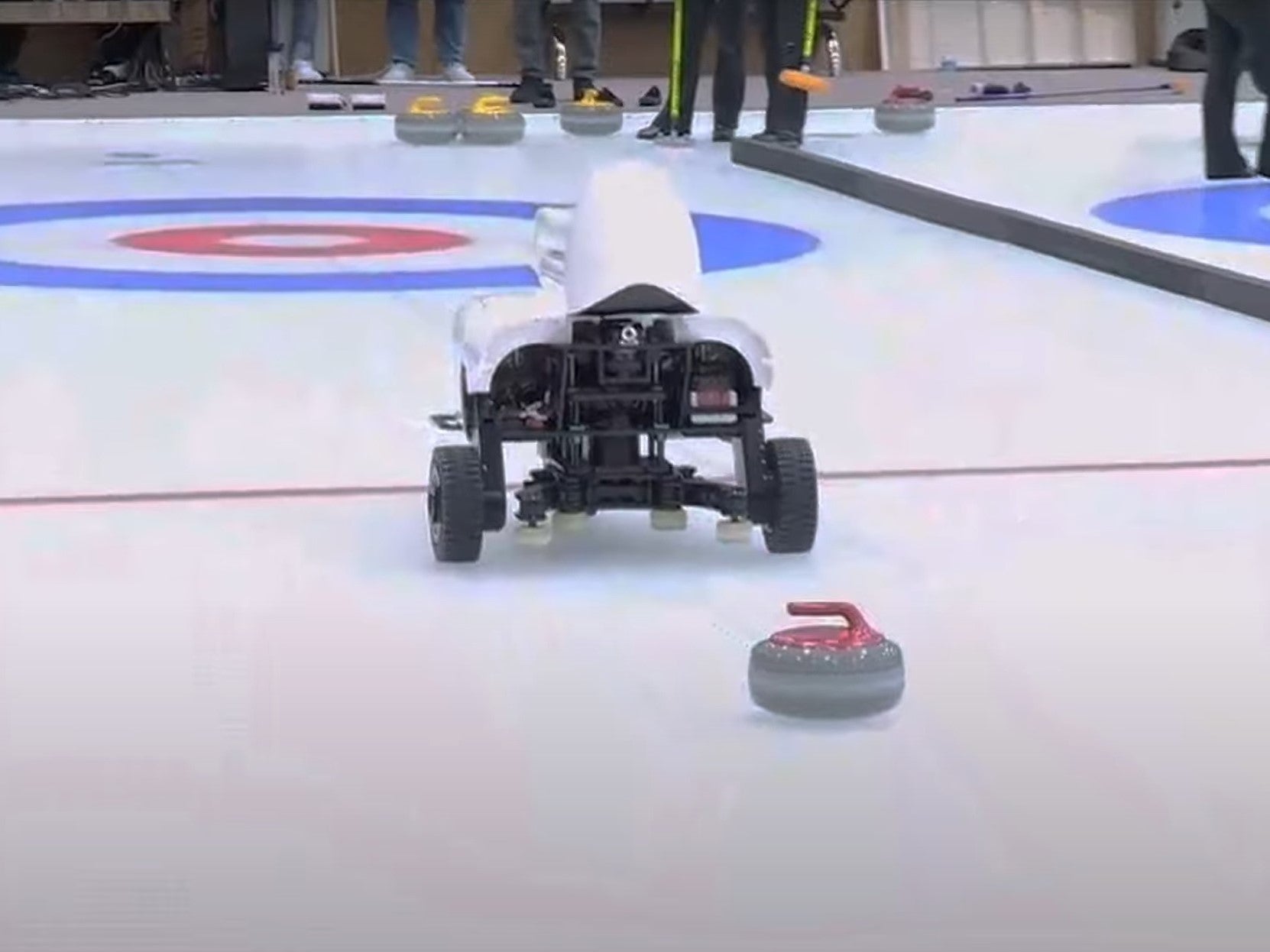Curling robot beats top-ranked human teams in major breakthrough
‘These results indicate the gap between physics-based simulators and the real world can be narrowed,’ researchers say

Your support helps us to tell the story
From reproductive rights to climate change to Big Tech, The Independent is on the ground when the story is developing. Whether it's investigating the financials of Elon Musk's pro-Trump PAC or producing our latest documentary, 'The A Word', which shines a light on the American women fighting for reproductive rights, we know how important it is to parse out the facts from the messaging.
At such a critical moment in US history, we need reporters on the ground. Your donation allows us to keep sending journalists to speak to both sides of the story.
The Independent is trusted by Americans across the entire political spectrum. And unlike many other quality news outlets, we choose not to lock Americans out of our reporting and analysis with paywalls. We believe quality journalism should be available to everyone, paid for by those who can afford it.
Your support makes all the difference.An AI-powered robot has beaten a team of professional curling players in a major real-world breakthrough for robotics.
The Curly robot, developed by a joint German-South Korean research team, used deep reinforcement learning to learn the best way to slide stones along the ice and land on the target.
In a match against top-ranked opponents, the robot won three out of the four games.
“These results indicate the gap between physics-based simulators and the real world can be narrowed,” the researchers wrote in a paper.
Curly makes use of two robots – a “Thrower-Curly” and a “Skip-Curly” – in order to both assess the target area and to slide the stone towards it.
The only difference to matches at professional competitions was the lack of sweepers – the players who brush the ice ahead of the stone as it slides in order to influence its speed and trajectory
The researchers from Korea University and the Berlin Institute of technology trained the robots AI on a computer game that simulates the physical properties of the stones and the ice.
Before each real-life game, Curly threw one stone in order to judge the current conditions of the arena’s surface.
“In curling, the environmental characteristics change at every moment, and every throw has an impact on the outcome of the match. Furthermore, there is no time for relearning during a curling match due to the timing rules of the game,” the researchers said.
“Our proposed adaptation framework extends standard deep reinforcement learning using temporal features, which learn to compensate for the uncertainties and nonstationarities that are an unavoidable part of curling.”
The research was published in the journal Science Robotics on Wednesday.

Join our commenting forum
Join thought-provoking conversations, follow other Independent readers and see their replies
Comments